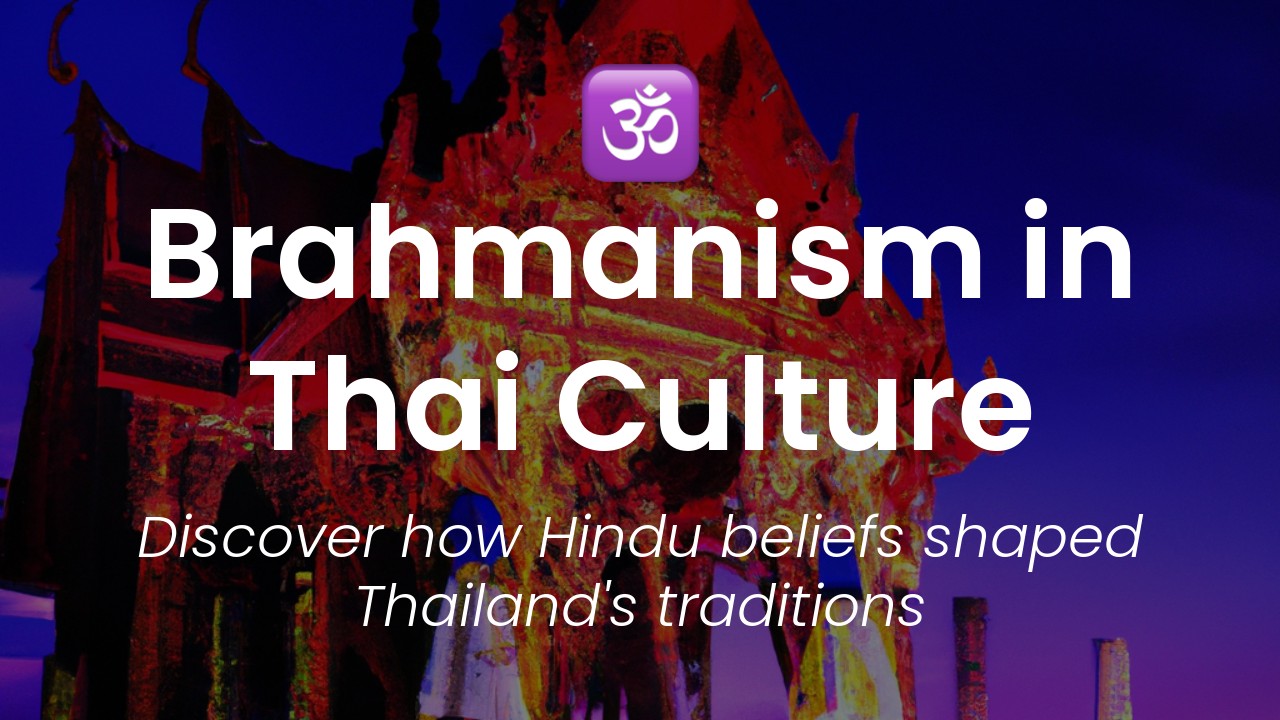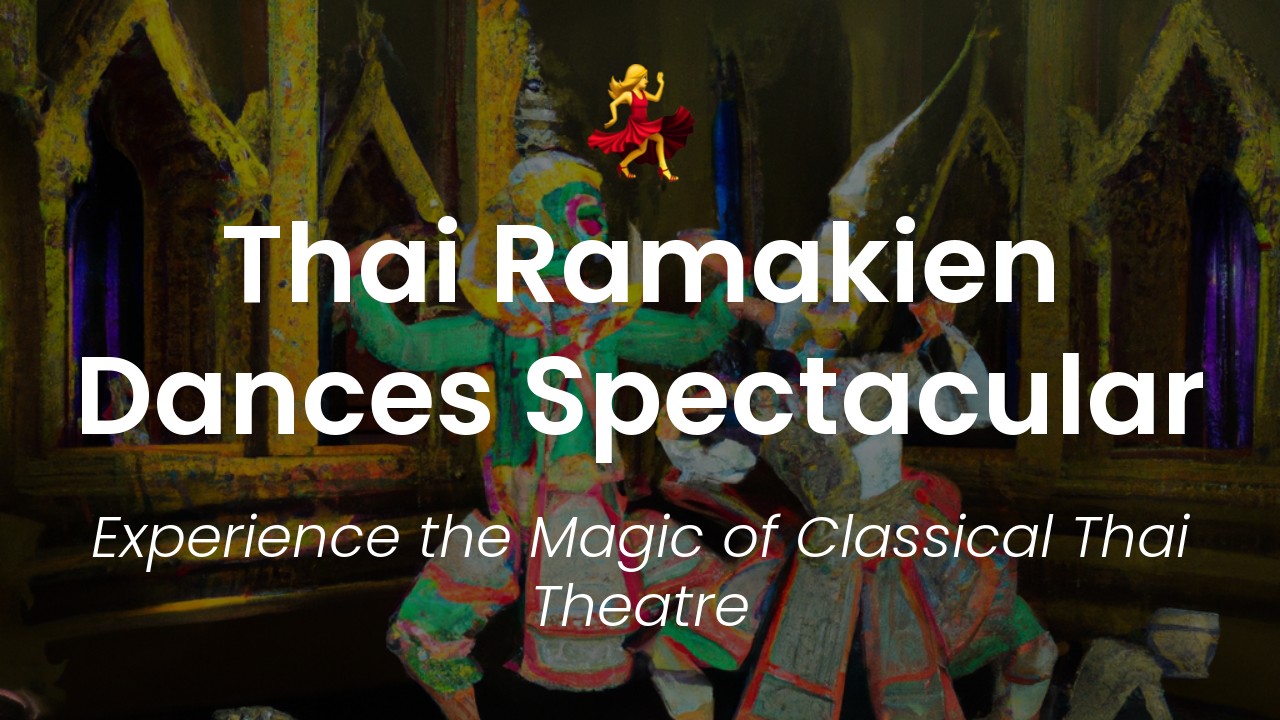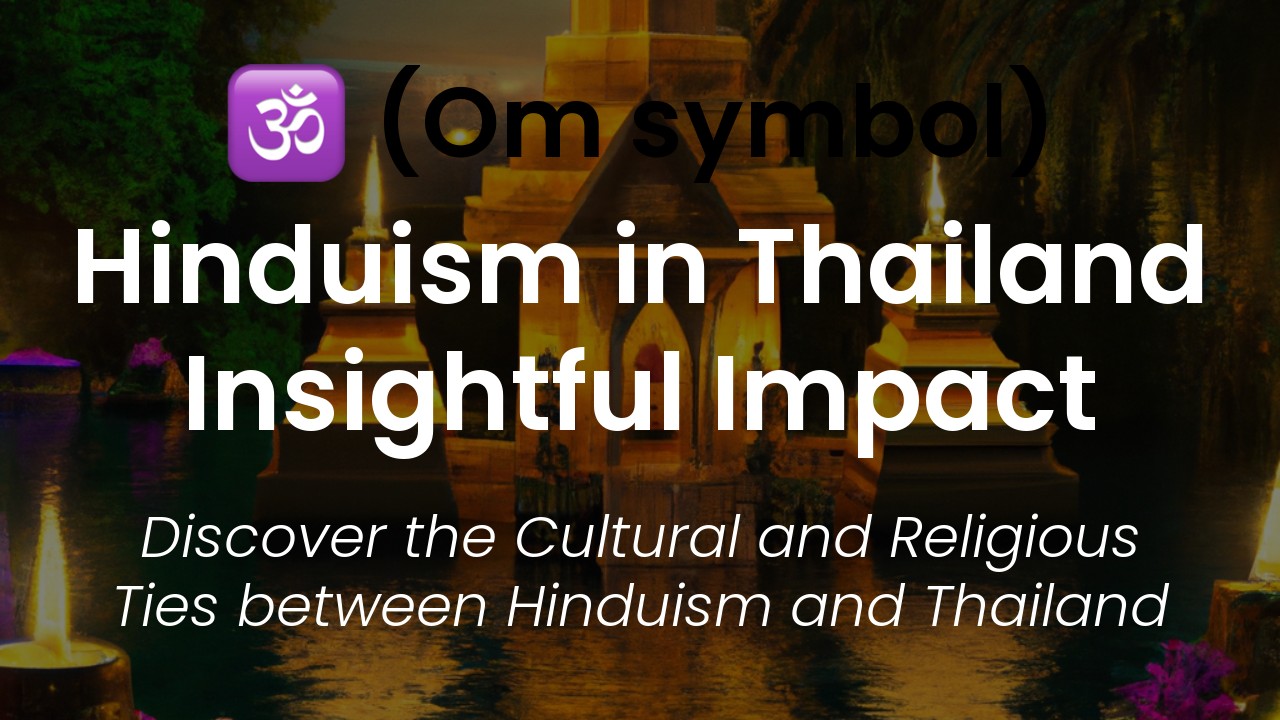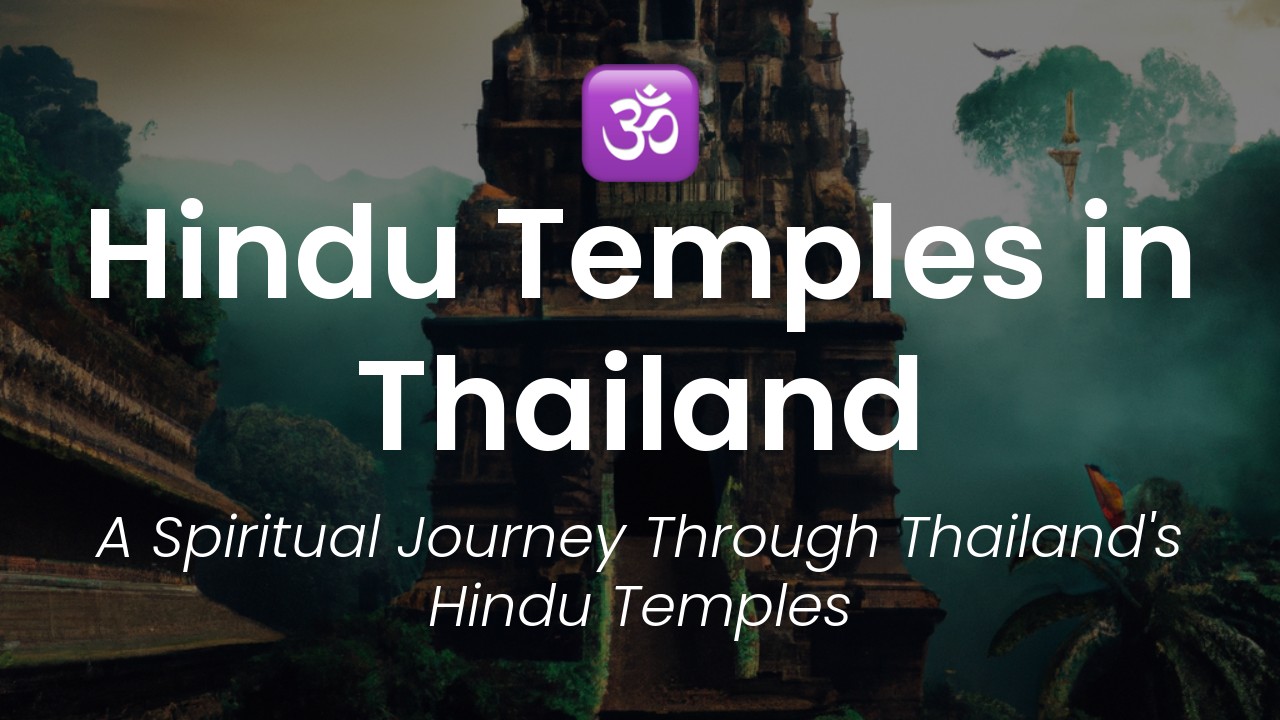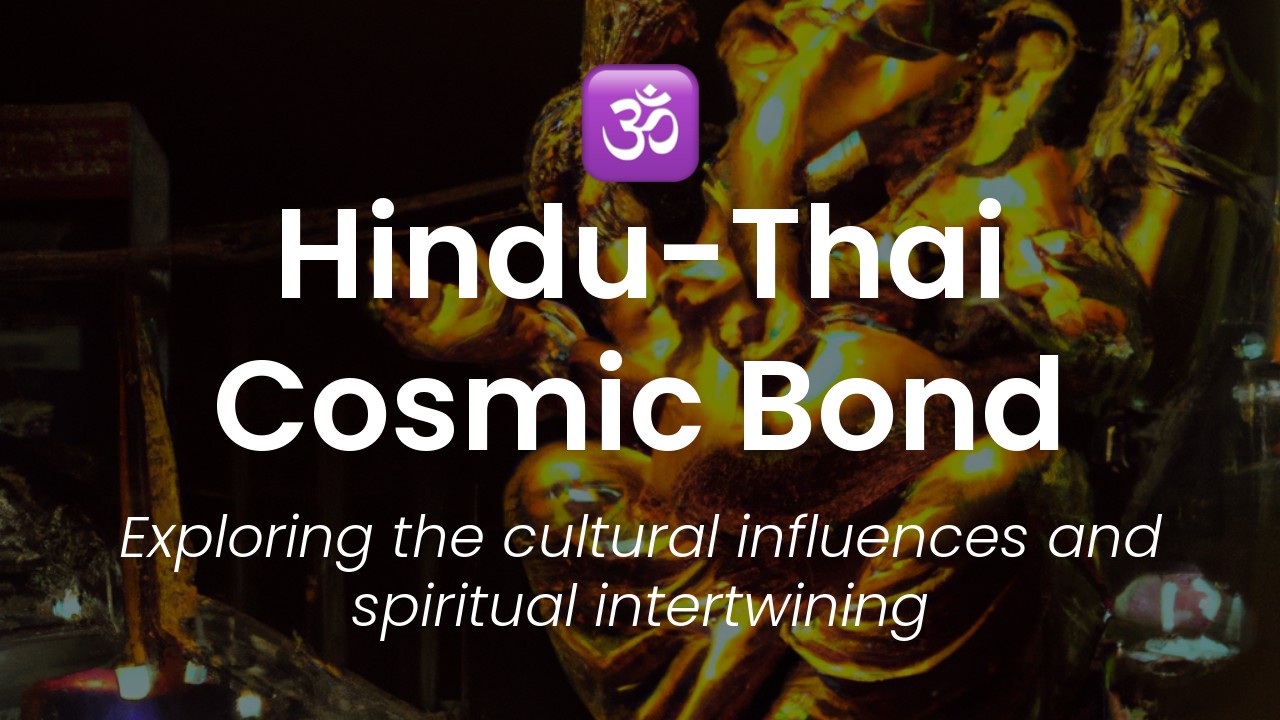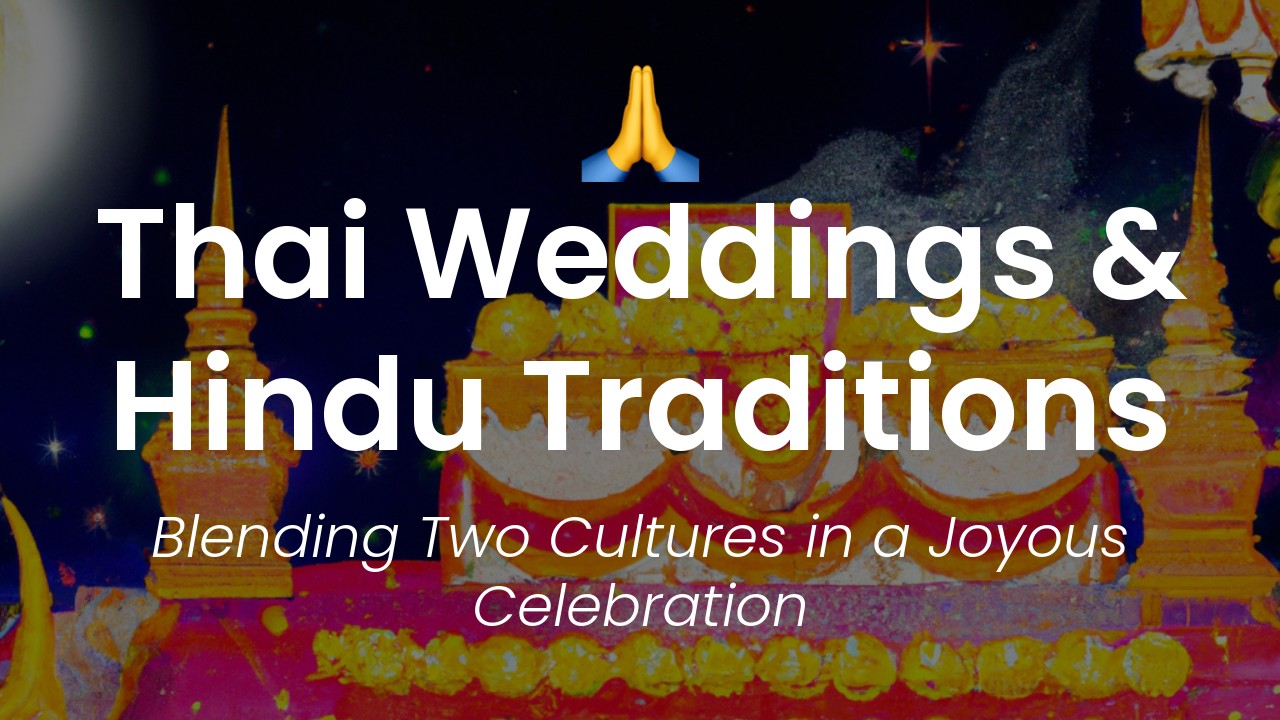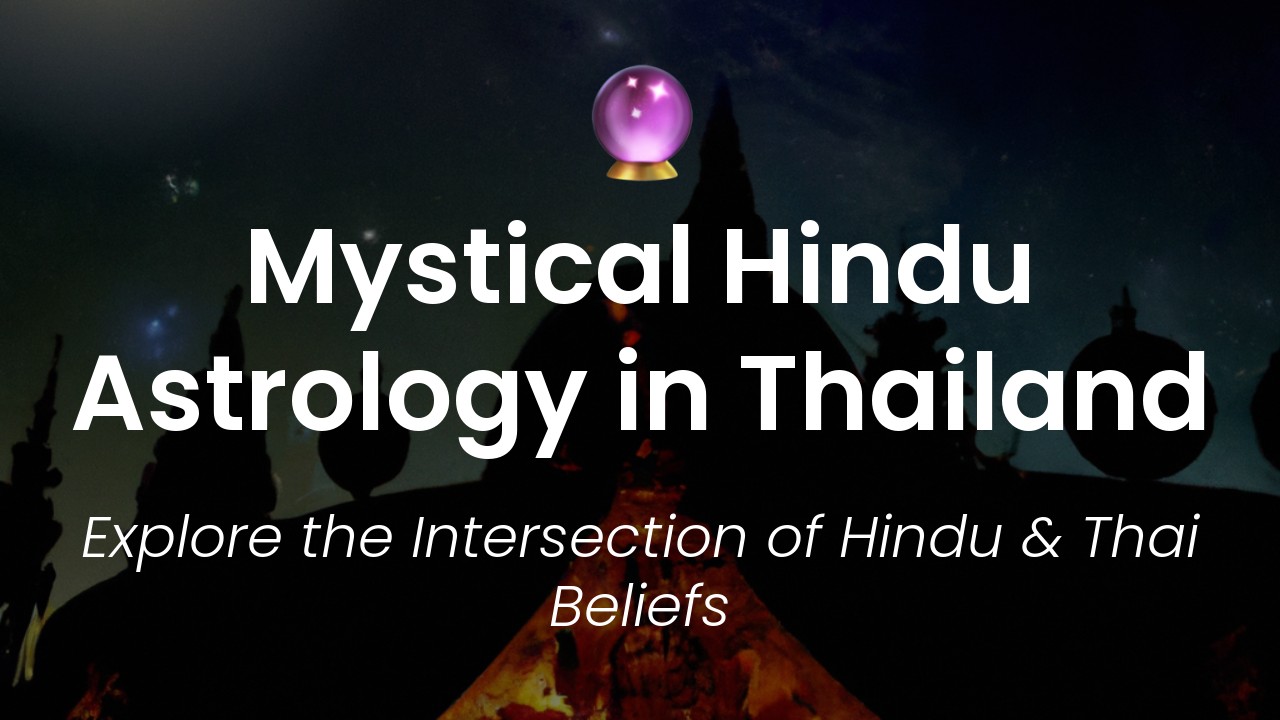As a Thai woman, I grew up immersed in the rich and vibrant culture of Thailand. From the colorful festivals to the mouth-watering food, there is so much to love about this country. But as I delved deeper into my culture, I began to realize that there was much more to it than meets the eye. One aspect that particularly caught my attention was the influence of Brahmanism, a religion that originated in ancient India and became a dominant force in Thai culture.
Brahmanism is a complex religion that has many different beliefs and practices. At its core, though, it emphasizes the importance of karma, dharma, and the pursuit of spiritual enlightenment. Over the centuries, Brahmanism has fused with other religions and traditions to create a unique synthesis of spiritual beliefs that is now an integral part of Thai culture.
However, despite its importance, Brahmanism remains an often-overlooked aspect of Thai culture. Many tourists who visit Thailand are unaware of its influence, and even many Thais themselves have only a basic understanding of the religion. In this article, I want to shed some light on this fascinating religion and explore the many ways it has shaped Thai culture over the centuries.
Origins of Brahmanism in India
Brahmanism is an ancient religious tradition that originated in India. It is a complex and multifaceted system of beliefs and practices that has had a profound influence on Indian culture and society. Its origins date back to the Vedic period, which lasted from around 1500 to 500 BCE.
The Vedas, which are Hinduism's oldest and most sacred scriptures, contain the fundamental teachings of Brahmanism. They outline the rituals and practices that Brahmins, the priestly class in ancient Indian society, were required to perform in order to maintain harmony with the gods.
However, Brahmanism was not solely a religious tradition. It was also a social, economic, and political system that helped to create and maintain a hierarchal social structure in ancient Indian society. The Brahmins who were the priestly class were at the top of this system, followed by the Kshatriyas (warriors), Vaishyas (merchants), and Shudras (laborers).
Despite its controversial aspects, Brahmanism served as the foundation for the development of Indian philosophy, literature, and art. And through the Indianization of Southeast Asia, it eventually came to have a profound influence on Thai culture.
Spread of Brahmanism to Southeast Asia
The spread of Brahmanism to Southeast Asia began in the first century CE when Indian traders started making regular trips to the region. As trade grew, Indian culture and ideas were gradually introduced to the local people.
Over time, Brahmanism became an essential part of Southeast Asian culture. The Thai kingdom of Funan, which existed from the first to the sixth centuries CE, was heavily influenced by Indian culture and religion. Many of its practices, such as cremation, were borrowed from Brahmanism.
The Khmer Empire, which was the dominant power in Southeast Asia from the ninth to the fifteenth centuries, was also influenced by Brahmanism. The religion's pantheon of gods and goddesses was integrated into Khmer religious beliefs, and Hindu epics such as the Ramayana became popular.
Even today, Brahmanism's influence on Southeast Asian culture can be seen in many aspects of daily life. For example, the Thai language still uses many Sanskrit words, and traditional dance and music have Indian influences.
Brahmanism's Impact on Early Thai Culture
When Brahmanism first arrived in Thailand, it encountered a society that was already heavily influenced by animistic beliefs and local traditions. Brahmanism was able to coexist with these beliefs by adapting to local customs rather than seeking to replace them.
For example, the Brahmins who arrived in Thailand began to adapt the local animistic beliefs into their religious practices. They incorporated them into Hindu mythology and incorporated local spirits into their pantheon of gods and goddesses.
This blend of local beliefs and Brahmanism eventually gave rise to what is now known as Thai Hinduism. It became a syncretic fusion of the two belief systems, with Thai gods and goddesses being incorporated into Brahmanic practices.
The Role of Brahmins in Thai Society
In ancient Thai society, the Brahmins played a crucial role in the royal court. They served as advisors to the king, performed religious ceremonies, and acted as mediators in disputes. They were highly respected and were seen as the guardians of Thai culture and tradition.
Their influence extended beyond the royal court as well. Brahmins were also teachers, and their knowledge helped to shape Thai literature, poetry, and music.
Brahmanism's Lasting Influence on Thai Religion
Although the majority of Thais today practice Theravada Buddhism, Brahmanism still plays an important role in Thai religious life. Many of the rituals and practices of traditional Thai culture have their roots in Brahmanism.
One example of this is the Thai tradition of Songkran, the Thai New Year. It is celebrated in mid-April and involves the pouring of water as a symbol of purification and renewal. This tradition has its origins in Brahmanic beliefs about the cycles of nature and the need for purification.
Brahmanism's Influence on Thai language and literature
Brahmanism's influence on Thai culture is also evident in the Thai language and literature. Sanskrit loanwords are abundant in the Thai language, and many Thai proverbs and idioms have their roots in Brahmanic mythology.
The Thai epic poem Ramakien, which is based on the Indian epic Ramayana, is considered one of the greatest works of Thai literature. It tells the story of Prince Rama, who is exiled from his kingdom and must battle demons to rescue his wife from the demon king Ravana.
The influence of Brahmanism in Thai literature can also be seen in the traditional Thai dance known as khon. Khon involves elaborate costumes and masks designed to represent characters from Hindu mythology.
Modern-Day Reflection of Brahmanism in Thai Culture
Although Buddhism is now the dominant religion in Thailand, Brahmanism's influence can still be seen in many aspects of Thai culture. The fusion of Hinduism and animistic beliefs that gave rise to Thai Hinduism continues to shape Thai religious practices and beliefs.
Brahmanism's influence can also be seen in Thai art, architecture, and literature. Many traditional Thai buildings, such as the Grand Palace in Bangkok, incorporate elements of Hindu and Buddhist architecture.
In conclusion, Brahmanism's influence on Thai culture has been profound and ongoing. From its earliest days in ancient India to its spread across Southeast Asia, Brahmanism has helped to shape Thai religion, language, art, and literature. It remains an essential part of Thai culture and has left an indelible mark on the country's identity.

